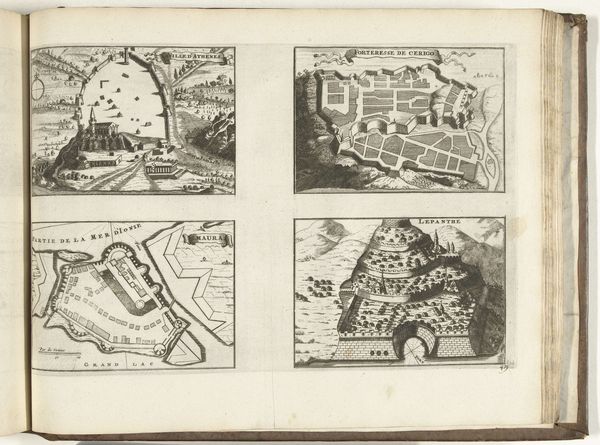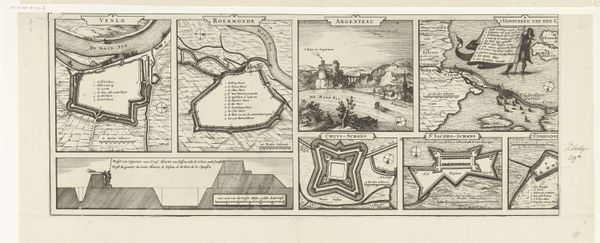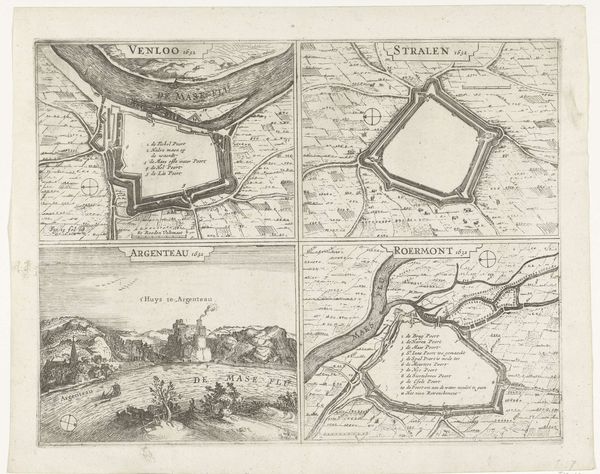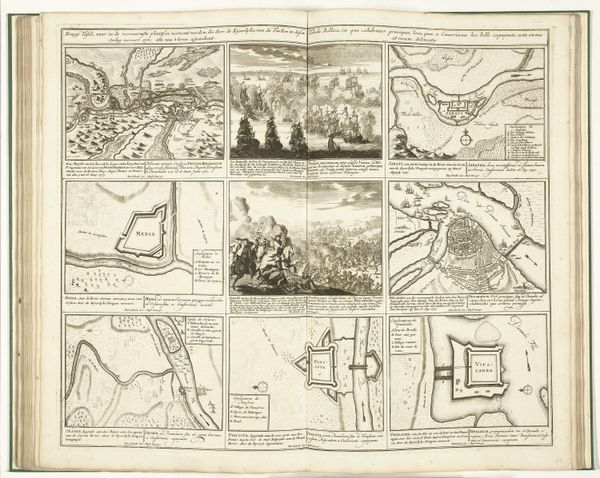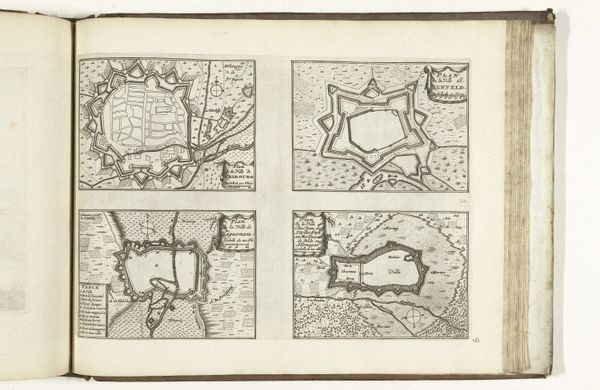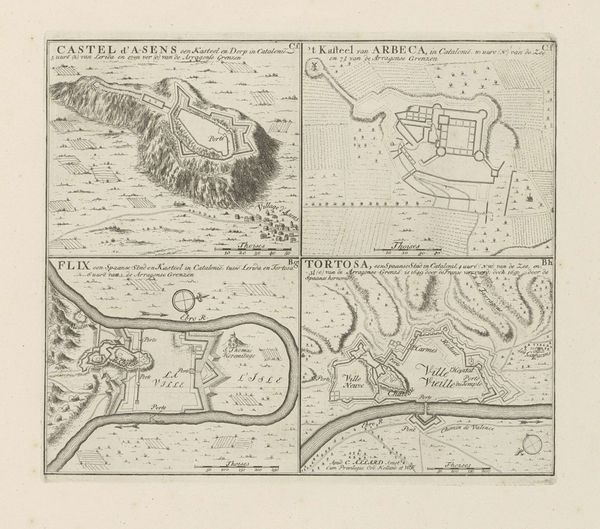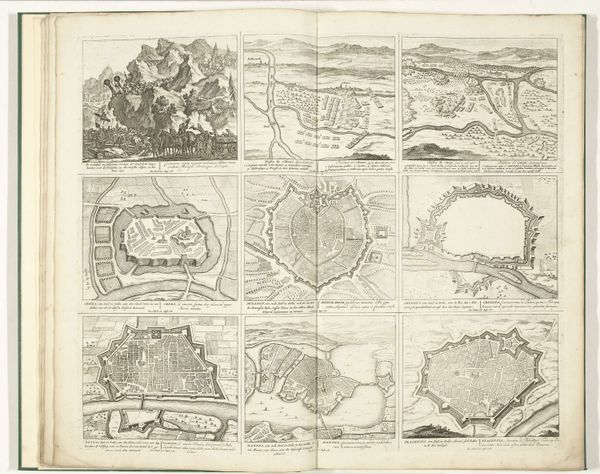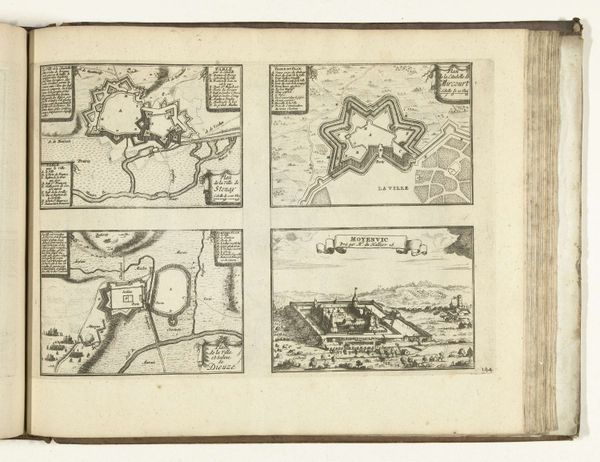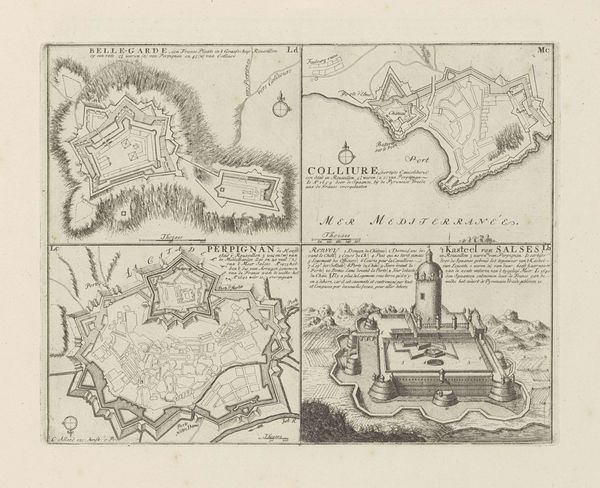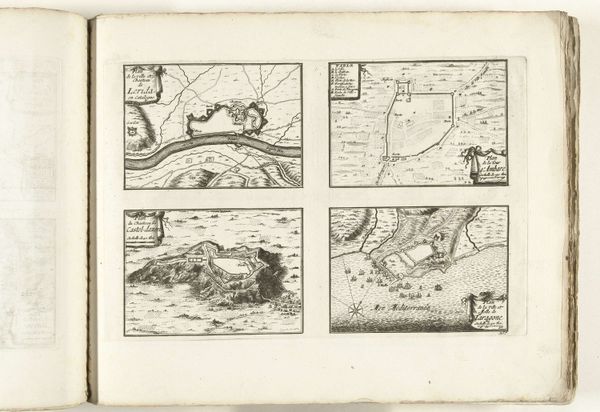
print, engraving
#
baroque
# print
#
pen illustration
#
landscape
#
cityscape
#
engraving
Dimensions: height 210 mm, width 533 mm
Copyright: Rijks Museum: Open Domain
Editor: This is Claes Jansz. Visscher’s "Siege of Maastricht, 1632 (plate 6)", an engraving from 1633 at the Rijksmuseum. It’s so intricate, almost like a technical drawing, but with these little vignettes of each location. How would you interpret the visual language being used here? Curator: Think about maps not just as representations of space, but as symbols of power and control. This isn’t just showing you where Maastricht is, but also communicating Dutch military prowess. What visual cues suggest that? Editor: Well, the level of detail gives it an air of authority. Each little town looks planned and strategically important, laid out almost mathematically. Curator: Exactly! These carefully delineated boundaries are assertions of dominion, but look closer – what are the names of these fortifications, and do they resemble shapes that you recognize from daily life? Are these merely maps? Editor: I see what you mean. There’s Straelen which resembles a perfect square. How about Orsoy, it vaguely looks like a star, maybe signifying… divine protection? The symbols of these shapes, plus the very act of mapping itself is claiming symbolic control? Curator: Precisely! Mapping was deeply intertwined with the concept of asserting a sense of power during the baroque era. Even something like the river might symbolize a lifeblood. Now think about who would have seen and interpreted this image, what narratives would this symbolic geography create, or reinforce? Editor: This really challenges how I usually understand maps – less as objective tools, and more as carefully constructed narratives. It is as if you can plant memories, ideas and claims, simply by pointing out how you wish to perceive something! Curator: And consider how we still use visual shorthand and established representations to this day! Perhaps those symbols never fully left our collective consciousness.
Comments
No comments
Be the first to comment and join the conversation on the ultimate creative platform.
